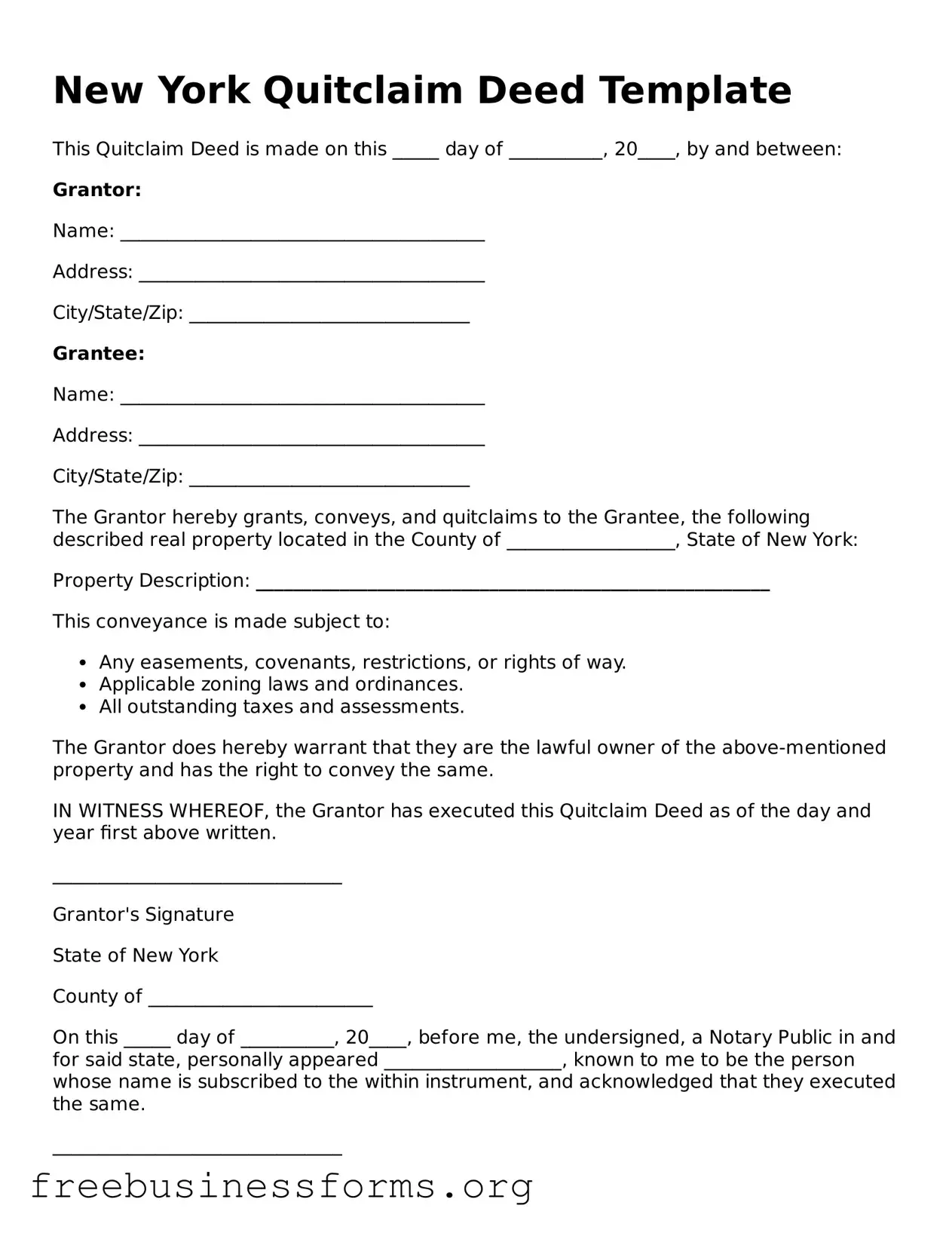New York Quitclaim Deed Template
This Quitclaim Deed is made on this _____ day of __________, 20____, by and between:
Grantor:
Name: _______________________________________
Address: _____________________________________
City/State/Zip: ______________________________
Grantee:
Name: _______________________________________
Address: _____________________________________
City/State/Zip: ______________________________
The Grantor hereby grants, conveys, and quitclaims to the Grantee, the following described real property located in the County of __________________, State of New York:
Property Description: _______________________________________________________
This conveyance is made subject to:
- Any easements, covenants, restrictions, or rights of way.
- Applicable zoning laws and ordinances.
- All outstanding taxes and assessments.
The Grantor does hereby warrant that they are the lawful owner of the above-mentioned property and has the right to convey the same.
IN WITNESS WHEREOF, the Grantor has executed this Quitclaim Deed as of the day and year first above written.
_______________________________
Grantor's Signature
State of New York
County of ________________________
On this _____ day of __________, 20____, before me, the undersigned, a Notary Public in and for said state, personally appeared ___________________, known to me to be the person whose name is subscribed to the within instrument, and acknowledged that they executed the same.
_______________________________
Notary Public Signature
My Commission Expires: ____________
